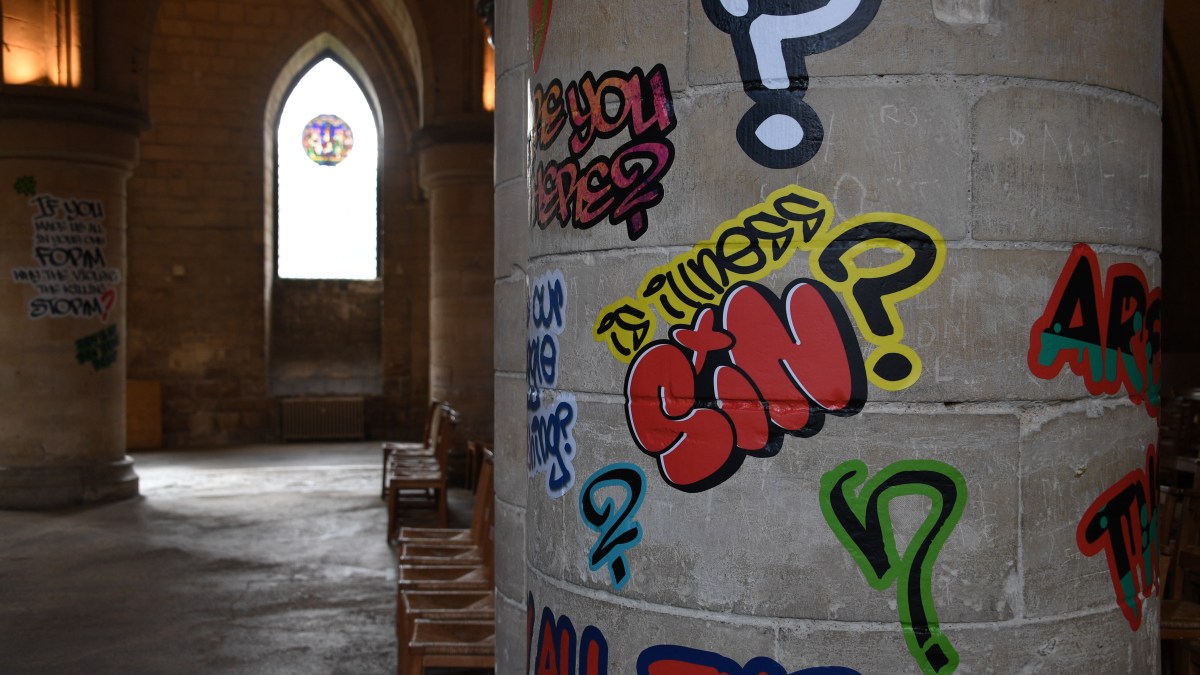The US vice-president JD Vance has criticised a graffiti–style art installation at Canterbury Cathedral for making a “beautiful historical building really ugly”, while Elon Musk has called it “shameful”.
Visitors were shocked this week to find the cathedral’s interior covered in what appeared to be graffiti. One described it as looking like “an underground car park in Peckham”, days after the Right Rev Dame Sarah Mullally was named as the next Archbishop of Canterbury within its walls.
The brightly coloured images on pillars, walls and staircases are part of an art installation that, by the cathedral’s own admission, has “divided public opinion”.

The graffiti stickers will be removed before the Right Rev Sarah Mullally’s enthronement ceremony

Vance and Musk are among those to have taken against the project after The Times reported on the installation. The cathedral said that a poet and curator had worked with “marginalised communities and a team of skilled artists to create vibrant handwritten literature responding to the question: ‘What would you ask God?’”
Vance posted on X: “It is weird to me that these people don’t see the irony of honoring ‘marginalized communities’ by making a beautiful historical building really ugly.”
Musk, the Tesla chief executive, replied to a post about the installation with the single word “shameful”.
The graffiti looks as if it has been spray-painted in typical street style, mimicking scribbled “tags”, rounded “throw-up” lettering and more complex “wildstyle” designs.
They have been “expertly and sensitively” applied as temporary stick-on graphics around the interior of the cathedral and carry questions that people have asked God during moments of doubt or curiosity.
• First female Archbishop faces battle for England’s soul
These include questions such as “Are you there?”, “Where does love come from?”, “God, what happens when we die?” and “Why did you create hate when love is by far more powerful?”
Cathedral bosses took the unusual step of proactively sharing some of the criticism of its art installation, noting that one visitor had told them: “I think it’s sacrilegious.”

The installation formally opens on October 17
They said: “[It] has split public opinion ahead of its official launch, with visitors reporting visceral reactions to the bold graffiti-style graphics and thought-provoking questions displayed on the ancient walls. While many have reported their delight and intrigue, others have been discomforted by encountering the artworks.”
They pointed to the fact that the cathedral was no stranger to graffiti, noting that it is already home to a host of images, crosses, initials and words scratched into its pillars and walls dating back as far as 1667.
They noted that there is a “great variety of historical graffiti within the cathedral, including masons’ marks, religious graffiti in the form of crosses and Christograms, and marks made throughout the centuries by pilgrims and other visitors”.
• Archbishop must grapple with fractious Church of England
Conceived by Alex Vellis, a poet, and Jacquiline Creswell, a curator, the Hear Us installation was inspired by community workshops in which people responded to the question: “What would you ask God?”
“There is a rawness which is magnified by the graffiti style which is disruptive,” said the Very Rev David Monteith, the Dean of Canterbury, recognising the project’s potential to divide opinion.
“This exhibition intentionally builds bridges between cultures, styles and genres and in particular allows us to receive the gifts of younger people who have much to say and from whom we need to hear much.”
The installation formally opens on October 17 and will remain in place until January 18, which means it will be removed before Mullally’s enthronement ceremony to install her as the 106th Archbishop of Canterbury.
Responding to Vance and Musk’s comments, the dean of the cathedral said the graffiti-style images were “undoubtedly jarring and will be unacceptable for some” but said they were asking “sincere questions of faith and meaning” and asked how this could be “interpreted as sacrilegious”.
“People will love or hate our ‘Hear Us’ installation, no question,” Monteith said. “But rather than react just on the basis of a few online comments, I would encourage people to come and experience the artworks for themselves and to make up their own minds.”

